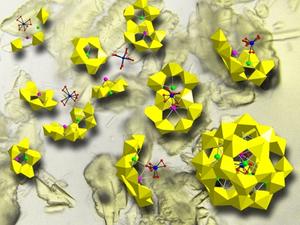
Molecules cause radioactive waste to cluster, facilitating cleanup // Source: kokokuxhito.info
submitted by Luis Kun
Homeland Security News Wire - March 14, 2012
Scientists have produced a previously unseen uranium molecule in a move that could improve clean-up of nuclear waste.
The distinctive butterfly-shaped compound is similar to radioactive molecules that scientists had proposed to be key components of nuclear waste. These molecules, however, were thought too unstable to exist for long.
A University of Edinburgh release reports that researchers have shown the compound to be robust, which implies that molecules with a similar structure may be present in radioactive waste.
University of Edinburgh scientists, who carried out the study, say their findings suggest the molecule may play a role in forming clusters of radioactive material in waste.
These are difficult to separate during clean-up. Improving treatment processes for nuclear waste, including targeting this type of molecule, could help the nuclear industry move towards cleaner power generation.
Recent Comments